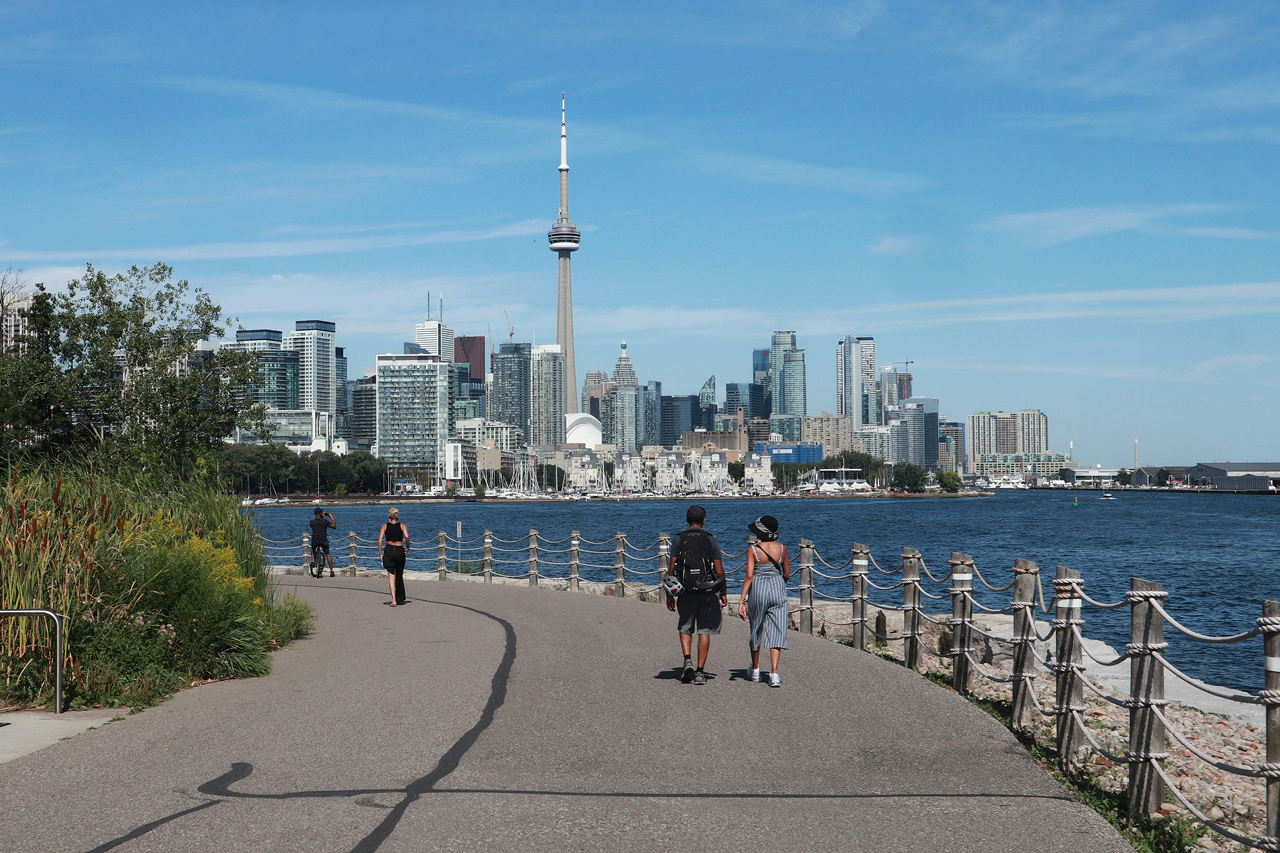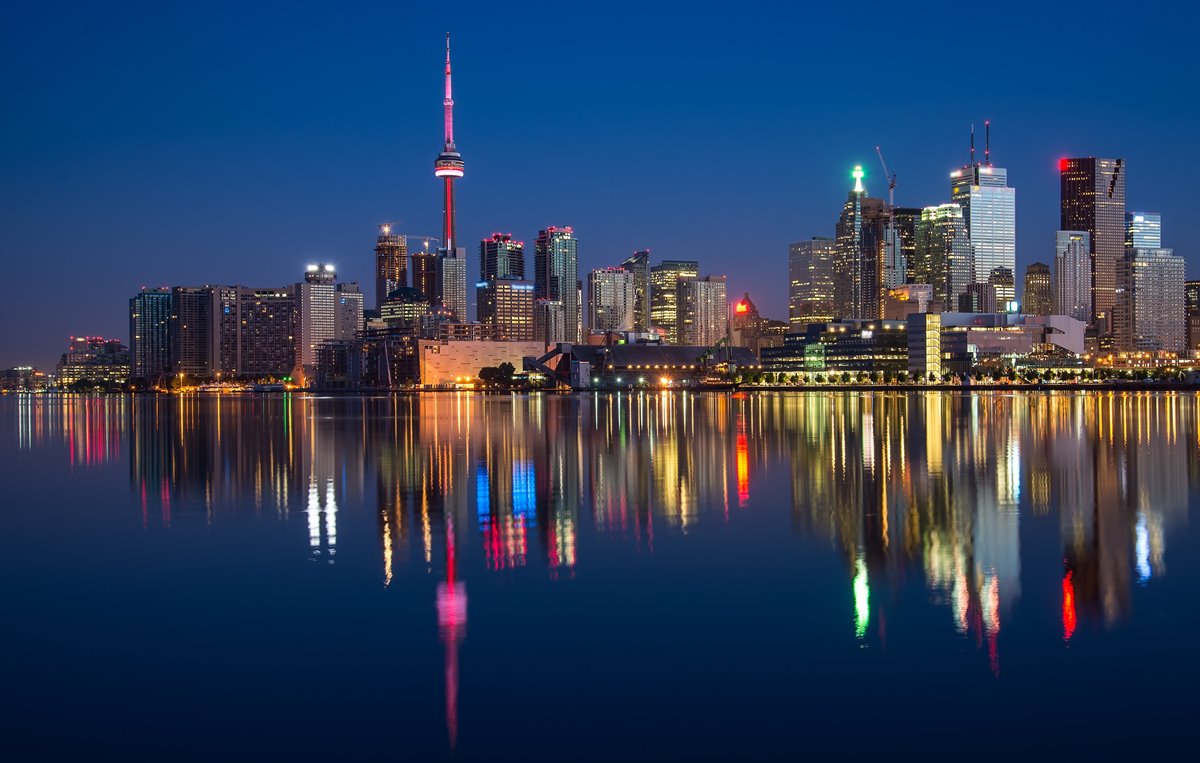
One of the thrills of our work at The Business of Cities is the chance to tune in to the unique features of every great city we work with, and shed new light on the lessons of others who have trodden a parallel path.
In the middle of 2023 on our first post-pandemic visit to Canada’s leading cities, one thing that stuck out to us was the unconsummated relationship between these cities and their water. Coming straight off the back of advising the London Thames Vision 2050 and Bilbao’s Nervion waterfront investment strategy, this seemed like a major missed opportunity.
So, when some months later the chance arose to contribute to a re-appraisal of the lakefront in the life of Toronto, we jumped. As a city that presents to the world through its waterfront window (18 of the first 20 Google images of Toronto include Lake Ontario), the chance to analyse and assess this was all too appealing. Our interest is sparked when the gap between potential and reality is as puzzling as it is wide.
Viewed from the outside, Toronto’s waterfront presents one such paradox.
On paper what the city has right on its doorstep is extraordinary: a working harbour, a gateway by air, land and water, three major sports teams and another one coming, a necklace of uplifting leisure attractions, venues for civic congregation, some of Toronto’s most thoughtful new urbanism (much under the stewardship of Waterfront Toronto), and once-in-a-lifetime opportunities for inspiring new pieces of city. In its 10 kilometres of central waterfront, Toronto has the good fortune to turn around and find essential extra carrying capacity for a rapidly growing city, and a canvas ideally suited to the next generations of creatives, scientists, energy technologies and climate adaptations that a region heading to 15 million people will depend on for the next 100 years and more.
Yet by contrast, what is immediately striking about the public and policy conversation in Toronto compared to others internationally is how rarely the waterfront is treated as an economic driver, a must-see experience, or a priority for the region’s success. For other top 20 global cities the central waterfront is usually the jewel in the crown, yet Toronto’s is still often ignored, stigmatised or contested. There is an emotional connection to the water in nearly every world city, but in Toronto at a macro level this connection can feel frayed, almost broken.
This seems to bely the waterfront as Toronto’s origin point and portrait to the world.
Great global city waterfronts are not only prioritised because of their growth and jobs metrics, but also valued because, like Toronto’s, they are home to fast-growing communities, a meeting place for residents and visitors alike, a green lung, a heat sink, and a source of common identity. The waterfront provides the setting like no other for Toronto to tell its past, present, and future more clearly to the world – something the global benchmarks suggest has been lacking amid the region’s population boom.
We soon discovered some of the familiar reasons why the waterfront’s potential remains unfulfilled. The large patchwork quilt bequeathed by 20th century choices has fragmented energies so far in the early 21st to foster a shared vision, identity, or sense of attachment and magnetism. Admirable institutions and agencies persevere with limited bandwidth. These constraints mean that as the region expands and local interests multiply, the common needs of the central waterfront tend to be drowned out. Important steps forward are still achieved valiantly but the pace is slower and the horizon narrower than it could be.
Part of the aim for the Ripple Effect report has been to distil the principles that the 20 or 30 most renowned and experienced urban waterfronts internationally have learned, that are relevant to Toronto. Getting people routinely on the water, real centres of gravity, attractive ways in and out, and a calibre of placemaking that speaks to Toronto’s 10,000 years connecting humanity with habitat.
These principles are applied commendably in patches but not with consistency and confidence. A new surge of energy and partnership is needed.
What will make the biggest difference?
As we show in the Ripple Effect report, among the most glaring absence to most international observers is the waterfront’s reachability. We were hard pushed to find an example of a leading international city with a waterfront next to downtown that has as few viable choices to reach the water or to move along it. Committing to a connected waterfront is what brings confidence and creativity to those who share an interest in its success.
The other difference-maker will be committed leadership. A new chapter of joint working and co-owned agendas can increase the momentum and profile of what should become one of North America’s great urban success stories. We are hopeful this chapter is already beginning.
By any measure the diversity and dynamism of the Toronto region is remarkable. It needs a central waterfront to match, one that is renowned, revered and reinserted to the city’s physical, mental and emotional map.
Contributed by:
-

Dr. Tim Moonen
Co-Founder & Managing Director, The Business of Cities
-

Emma Frost
Associate Director at The Business of Cities and Chair of the UK Innovation Districts Group


